Remember the simple joy of spinning a top as a child? The smooth, effortless pirouette as it twirled on the table, each revolution seemingly perfect and endless. What many of us didn’t realize then was that we were actually marveling at the principles behind a highly sophisticated manufacturing process known as CNC turning services.
Just like the careful craftsmanship that goes into creating a well-balanced toy top, CNC turning is an art form that transforms raw materials into precise cylindrical parts. It’s a process that holds the secrets to the seamless curves and contours found in essential components of our everyday machines – from the sleek axle of a bicycle to the robust shafts within the engines of cars.
In the same way that each spin of a top can tell a story of balance and precision, every piece crafted through CNC turning has its own narrative of innovation and precision engineering. Let’s delve into the revolving world of CNC turning fabrication and discover how it works, what it’s best used for, its few limitations, and how it plays well with its sibling process, CNC milling.
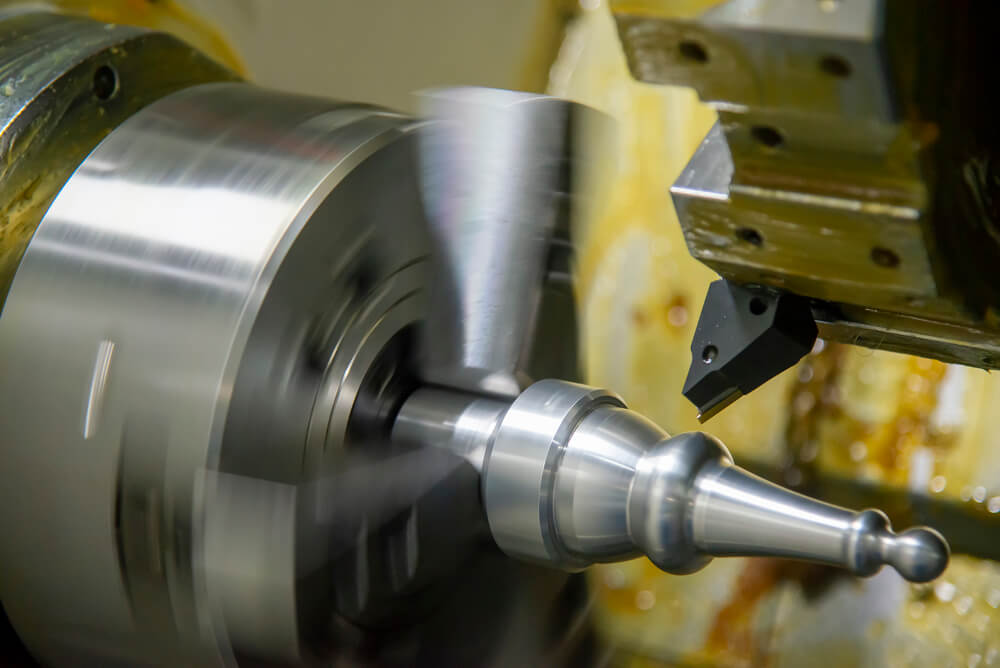
How Does CNC Turning Work?
With CNC turning services, the action happens when a lathe—a tool that spins the material on its axis—meets a stationary cutting tool that shapes the material as it rotates. It’s a bit like sculpting with a pottery wheel, only with metal or plastic and a lot more precision. The computer dictates every curve and contour based on the programmed design, ensuring that each part is a carbon copy of the last.
Now, while the basics of CNC turning services are relatively simple in concept, there are numerous types of turning processing which allows for the expanded variety in the types of parts that can be created. So let’s take a closer look at the various types of CNC turning processes. Each one brings its own spin to the manufacturing table, catering to different complexities and design requirements.
Straight Turning
In straight turning, the cutting tool moves parallel to the axis of the workpiece, trimming it down to the desired diameter. This is like peeling the layers off an apple in long, straight strokes. It’s the most basic type of turning and is used to reduce the diameter of the material uniformly.
Taper Turning
When you need a cone-shaped part or a shaft that tapers, taper turning is the way to go. The cutting tool is angled to the workpiece’s axis to cut a taper, which can be done in several ways: by setting the tailstock at an angle, using a compound rest, or programming the CNC machine to move the tool at an angle.
Profiling
Profiling is where things start to get interesting. The cutting tool follows a contour that is more complex than a simple straight or tapered line, allowing for the creation of various intricate external shapes on the workpiece. It’s like drawing on a spinning piece of clay, where the tool cuts in and out to create profiles or specific patterns.
External Grooving
Just as it sounds, external grooving involves cutting grooves on the outside of the workpiece. The tool moves radially into the workpiece to cut away material and create grooves of various widths and depths. This is crucial for parts that need to fit together precisely or for creating features like O-ring seats.
Internal Grooving
Internal grooving is similar to external grooving but takes place inside a hollow workpiece. Special grooving tools are used to carve out grooves within the bore of the part. This could be used for internal circlips, for example.
Parting Off
Also known as cutting off, this process is used to cut a part off from the rest of the workpiece once it has been completed. The cutting tool moves radially into the workpiece until it’s fully severed, essentially ‘parting’ the finished piece from the stock material.
Drilling
CNC lathes can also drill precise holes into the workpiece. A drill is mounted on the turret and is fed straight into the material. Drilling on a lathe is advantageous because it allows for centered holes on cylindrical parts, often with higher precision than a standalone drill press.
Boring
Boring is used to enlarge a hole that has already been drilled or cast. The boring tool is used to cut the hole to the final size and finish. This is useful for creating highly accurate diameters or when you’re prepping a hole for a precise fit, like a bearing seat.
Threading
Threading is a turning process where the tool is programmed to cut a helical groove onto the external or internal surface of the part. This is essential for screw threads or threaded pipes. Both metric and imperial thread forms can be cut using this process.
Knurling
Knurling is a process where a pattern is rolled onto the surface of a part for grip. Think of the textured grip on a metal tool handle—that’s knurling. It doesn’t remove material but instead pushes it into a raised pattern.
Each type of CNC turning process allows machinists to create a vast array of parts and features with high precision and repeatability. The beauty of CNC turning lies in its ability to combine these processes to create complex parts with various external and internal features, all in a single setup. This versatility makes CNC turning an invaluable part of modern manufacturing, when you need more than just a basic shaft or cone.
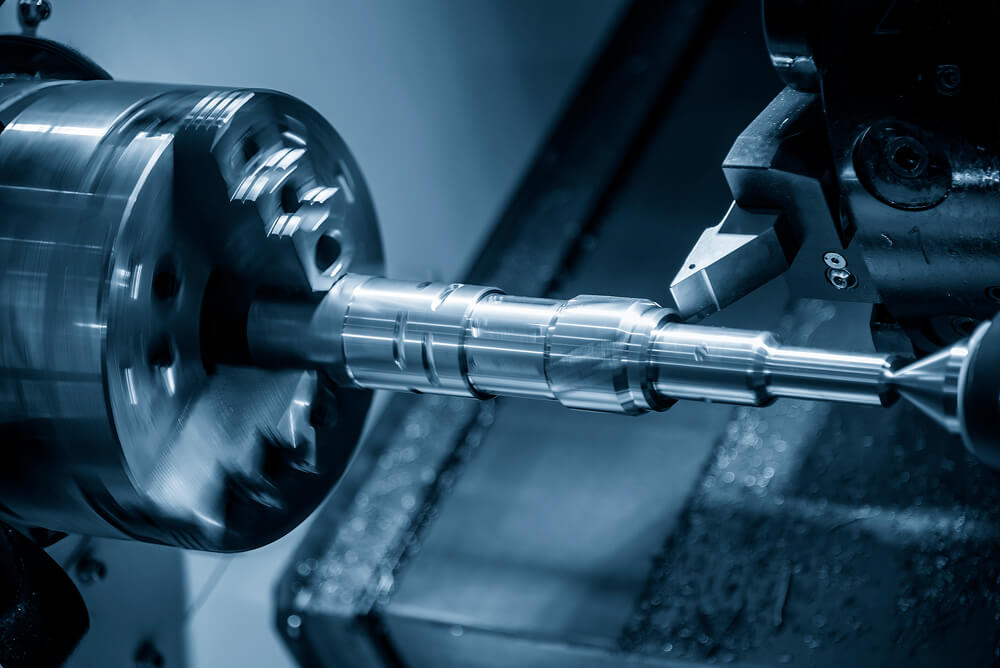
Ideal Parts for Lathe Services
If your part is symmetrical along a central axis, CNC turning is your go-to. Think of objects like chess pieces, batons, or even rocket nozzles. These parts often require detailed outer curves and precise internal bores. If your part looks to have cylindrical features that revolve around the entirety of a side, then using a lathe is the most effective way to achieve these features.
The ideal candidates for this process span across various industries, from aerospace to medical, and include parts that require symmetrical features around a central axis. Let’s explore some of the types of parts that are perfect for CNC turning services.
Shafts:
Shafts are a common component in machinery where rotation is required. They may have features such as grooves, threads, or tapers, and CNC turning is adept at creating these features with precision.
Flanges:
Flanges are used to connect pipes, tubes, or other components and often require a high degree of accuracy to ensure a tight seal. CNC turning can create the necessary dimensions and surface finish for effective sealing.
Bushings and Bearings:
These components often fit into a mating part and rotate or slide within their housing. CNC turning is critical for achieving the tight tolerances and smooth surfaces needed for these parts to function correctly without excess friction
Fasteners:
Bolts, screws, and nuts require precise threading and uniformity, which CNC turning can provide. This ensures that the fasteners are robust and can reliably secure components together.
Pins:
Dowel pins, hinge pins, or locator pins are often used for alignment or as pivot points. They are typically straight, with consistent diameters, making them ideal for straight turning operations
The ideal parts for CNC turning are not limited to completely round objects; parts can have off-center features as well. The process is highly adaptable and can be used for both prototyping and full-scale production runs. The key factor is the requirement for rotational symmetry and the need for features that are best manufactured by the turning process, like internal and external diameters, threads, or spherical surfaces. By leveraging CNC turning’s strengths, manufacturers can produce high-quality parts efficiently and effectively.
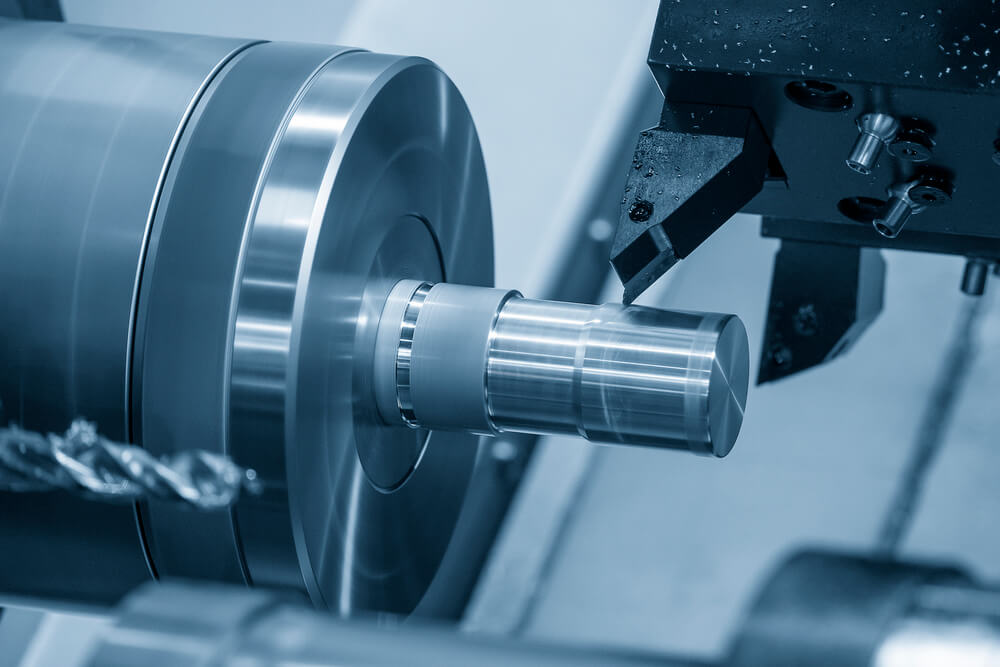
Drawbacks to CNC Turning Fabrication
No process is perfect, and CNC turning does have its limitations. It’s superb for cylindrical parts but not the choice for complex geometries that have non-cylindrical shapes. There’s also the matter of material wastage; as the cutting tool carves away material, some of it ends up as scrap. It’s an inevitable part of the process, but modern techniques and software are getting smarter about minimizing waste.
While CNC turning services offer a multitude of advantages, like precision, repeatability, and efficiency, there are also some drawbacks to consider. Understanding these limitations can help in deciding whether CNC turning is the right process for a particular manufacturing project. Here are some of the drawbacks:
Material Waste:
CNC turning is a subtractive manufacturing process, meaning it carves the material away from a larger block or bar. This can result in more waste compared to additive manufacturing processes like 3D printing, especially if the part geometry has a lot of empty space.
Limited to Rotational Parts:
The nature of the CNC turning process is such that it is inherently limited to parts that have cylindrical features or are rotational in design. This means that parts with complex internal geometries or non-cylindrical shapes might require additional processing steps like CNC milling.
Tool Access:
There are restrictions on how close the turning tools can get to chuck jaws or other fixtures holding the workpiece. This might require additional operations to complete features that the turning tools can’t access.
Cost of Complex Setups:
For parts that require multiple setups or special tooling, the setup costs can be higher. Each new orientation or tool change can add to the production time and cost, making it less economical for smaller production runs.
Size Limitations:
The size of the part that can be turned is limited by the size of the lathe. While there are large lathes available, they are not as common and can be more expensive to operate and maintain.
Surface Finish Limitations:
While CNC turning can produce parts with excellent surface finishes, there might be limitations when a super-fine finish is required. Additional post-processing like grinding or polishing might be needed.
Difficulty with Hollow, Thin-Walled Parts:
When turning hollow, thin-walled parts, there is a risk of the part deforming due to the clamping forces and the pressure of the cutting tool, especially if the material is not rigid enough.
Tolerance Accumulation:
In a multi-step turning process, each step may introduce a small amount of variance, and these can accumulate to take the part out of tolerance, requiring careful planning and quality control.
Despite these drawbacks, CNC turning remains a crucial and highly valuable manufacturing process. The key is to understand the limitations and plan the manufacturing process to mitigate these issues effectively. For many applications, the benefits of CNC turning—such as speed, precision, and the ability to produce complex parts quickly—far outweigh the drawbacks.
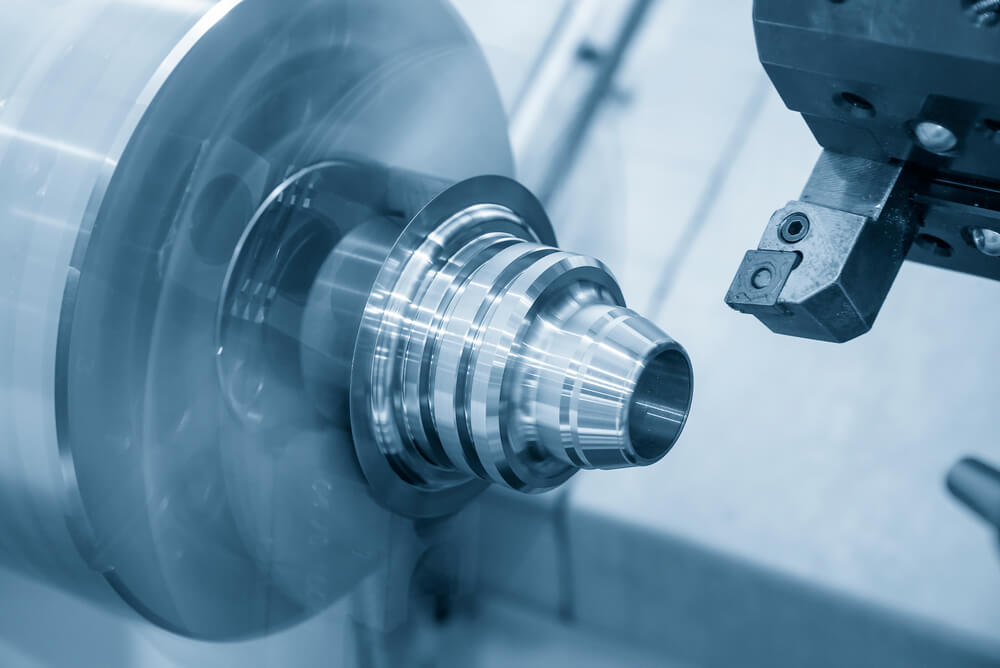
CNC Turning and Milling: A Perfect Pair
While CNC turning is the king of symmetrical shapes, CNC milling is the master of complexity. Milling uses rotary cutters to remove material from a stationary block, allowing it to create complex shapes and features. When you combine turning and milling, you get parts that are both symmetrically perfect and complexly featured. It’s like having your cake and eating it too, with a cherry on top shaped by a mill.
In summary, CNC turning services offer a high-precision method to create symmetrical parts across a wide range of materials, though it’s not without its minor drawbacks. But when paired with CNC milling, the possibilities in precision manufacturing expand dramatically.
Combining CNC turning and CNC milling allows for the creation of parts with complex geometries that would not be possible using either process alone. This synergy can be harnessed in several ways to enhance the capabilities of a machine shop and produce advanced components:
Complex Shapes:
While CNC turning excels at creating cylindrical shapes, adding CNC milling into the mix enables the addition of features such as slots, holes, pockets, and other complex surface contours. This is especially useful for parts that require both rotational symmetry and intricate features, like turbine blades, custom gear housings, or high-precision instrument components.
Precision Features:
In situations where a part needs precision features that are not aligned along the cylindrical axis, CNC milling can be used to achieve this. For example, a part may be turned to create a smooth cylindrical surface, and then milling operations can be applied to create precise flat surfaces, keyways, or cross-holes with tight tolerances.
Single Setup Manufacturing & Reduced Production Time:
Advanced CNC machines, often called mill-turn centers, combine both turning and milling capabilities in a single setup. This reduces the need to transfer the workpiece between different machines, maintaining high precision by minimizing errors that can be introduced during the movement and re-clamping of the part.
When both processes are combined, especially in a mill-turn center, the production time for a part can be significantly reduced. This efficiency comes from the ability to perform multiple operations simultaneously and from the reduction in setup times.
Improved Surface Finish:
CNC milling can provide a different type of finish compared to turning. For instance, while turning can produce a very smooth surface finish, milling can create a textured finish if needed. By combining both, manufacturers can achieve the desired surface characteristics in different regions of the part.
Enhanced Material Utilization:
Integrating turning and milling can optimize material usage. Turning can rapidly remove large amounts of material, and milling can then be used to add precision features without wasting material, which is particularly beneficial for expensive materials.
Complex End Features:
End features that require both rotational cutting and feature-specific shaping benefit greatly from the combination of turning and milling. For example, a part may require a threaded end with a milled flat for a wrench—this combination is ideally suited for a CNC machine with both capabilities, but can be achieved by transferring the part between machines at various production points.
Integration with Other Manufacturing Processes:
For parts that require additional work after CNC machining, such as heat treatments, welding, or surface coatings, the combined turning and milling processes can prepare the part with the necessary tolerances and finishes to accommodate these subsequent processes.
By leveraging both CNC turning and CNC milling, manufacturers have the flexibility to produce parts that are not just complex, but also customized to specific needs with high efficiency and precision. This integration pushes the boundaries of what can be achieved in modern machining, leading to innovations in engineering and manufacturing across a wide range of industries.
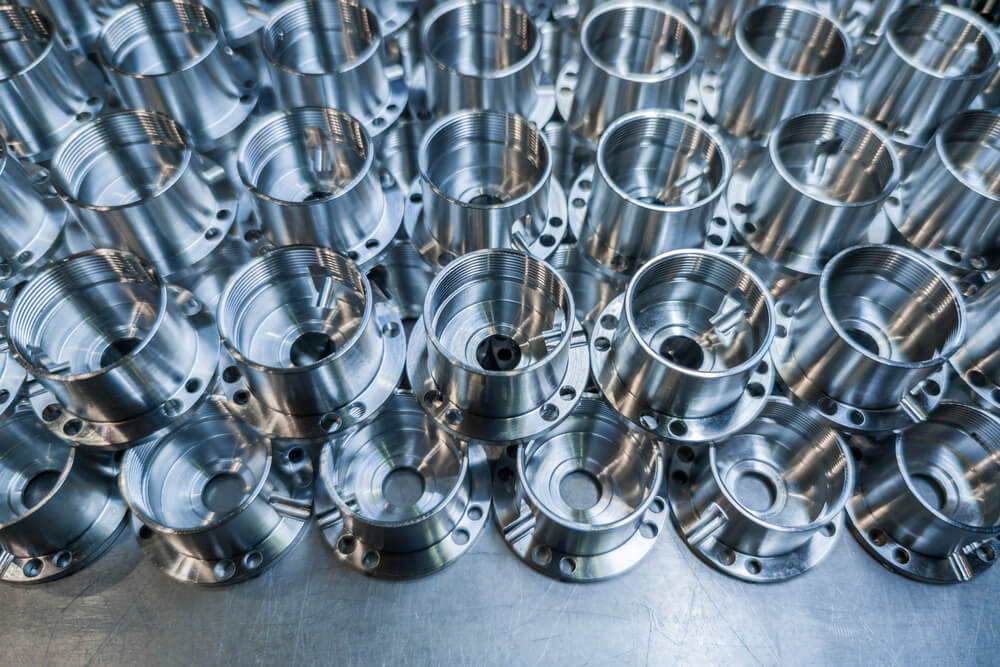
The End of a Revolution: A Look Back On Turning Services
As we reach the end of our exploration into the world of CNC turning, it’s much like coming to the last few spins of a top that’s about to come to rest. We’ve watched it in motion, marveled at its precision, and learned about the intricate dance between tool and material that brings complex parts to life.
Just as a child’s spinning top eventually wobbles and settles, so does our journey through the precise and deliberate world of CNC turning. But unlike the toy, the impact of CNC turning doesn’t stop when the motion ceases. The components created with this method continue to play critical roles in machinery and devices we rely on every day.
From the delicate threads on a screw that holds a child’s toy together to the robust components that power aerospace engines, CNC turning services are the invisible hand guiding the harmony of the industrial ballet. It’s a reminder that in the background of our daily lives, there are countless perfectly turned parts all spinning together to keep our world moving.
So the next time you see a top spin, take a moment to appreciate the complex simplicity of turning — both in play and in the precision of fabrication. It’s a childhood memory and an engineering marvel, all revolving around the axis of human ingenuity.